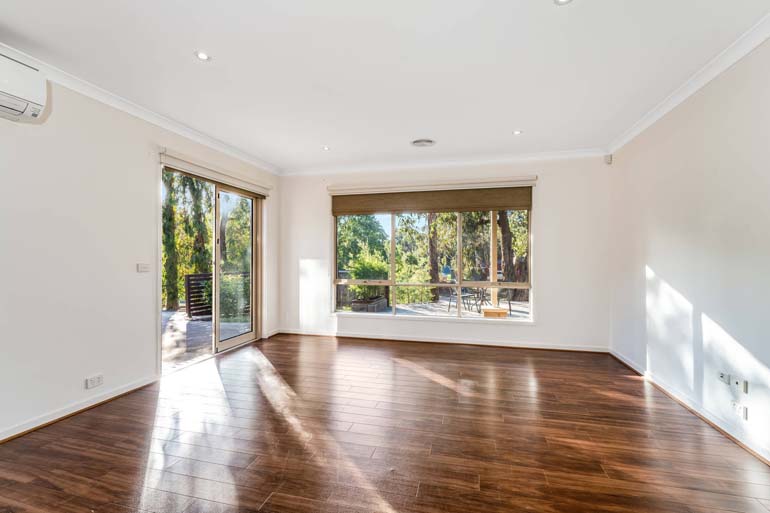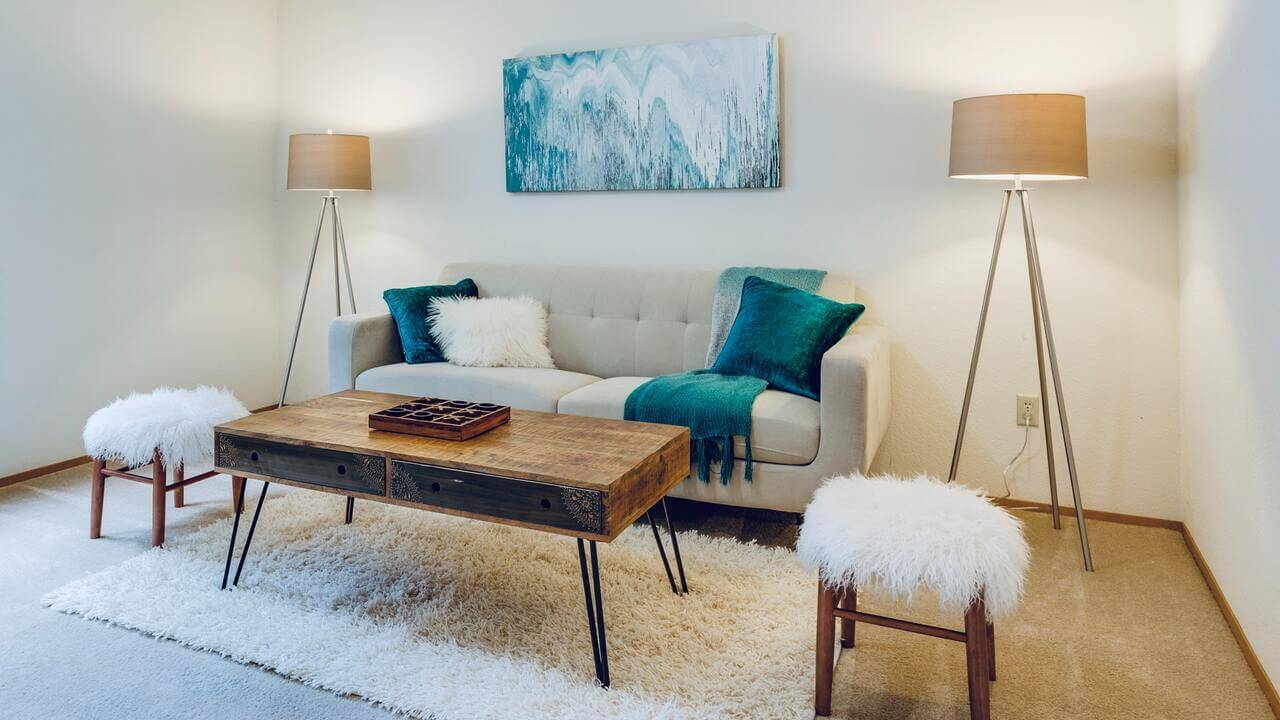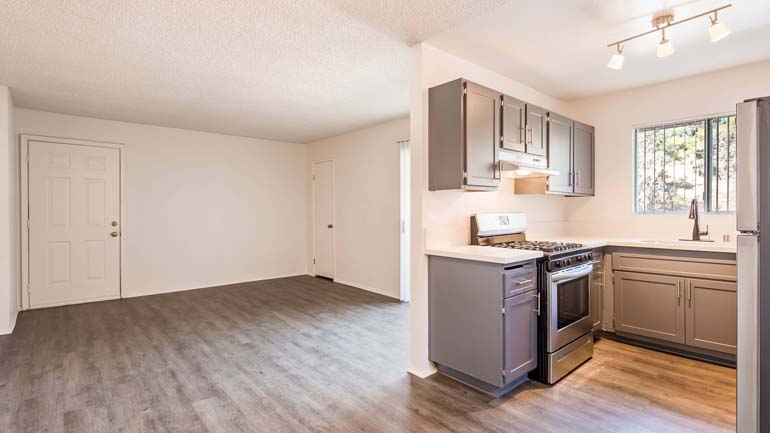Table of Contents
- What Is Staging and Why Have It Done?
- The Basic Difference Between Home Staging vs Virtual Staging
- Home Staging vs Virtual Staging – A Comparison
- Can’t Decide? Let PhotoUp Help!
Staging is a valuable marketing tool for making a property look its best and helping buyers visualize themselves living in the home.
Home staging can help market a listing more successfully. But, which is better — traditional home staging or virtual staging?
In this article, we’ll compare home staging vs virtual staging to better understand the advantages and drawbacks of each.
But first, let’s see why staging is so important!
What Is Staging and Why Have It Done?

Staging a home means preparing it to go on the market for sale by enhancing the furnishings and decor — and sometimes, renovating rooms to make the property as attractive as possible.
When potential buyers come to see the home, it must look its best. But it’s also highly important that the buyers can envision themselves living in the home.
Too many personal items around the house can be distracting, but empty rooms can also come off as cold and uninviting.
Home staging can be the solution. There are several significant benefits to staging, including:
- Improved visual and curb appeal. Professionally staged homes tend to look attractive, encouraging more buyers to consider your property
- Staging helps buyers see the property’s potential. It can be hard to see the full potential of empty or cluttered rooms
- Increase the selling price. Staging helps move properties faster, and often for higher selling prices
The Basic Difference Between Home Staging vs Virtual Staging
So, when staging is it better to use traditional home staging or virtual staging?
Before we can begin comparing the two approaches, we need to first ask what’s the difference?
Traditional Home Staging
Traditional home staging typically involves hiring a home staging professional to prepare the home before listing it.
They will work with the current furniture and other decor items or will rent them, to highlight the listing’s best features.
Home stagers then go to work adjusting the layout and the design elements of each room to make the home more appealing to potential buyers. They may also work on remodeling and repair projects.
Virtual Home Staging


Virtual staging is a technology that allows photo editors and designers to digitally furnish and decorate a photograph of a room. It transforms vacant spaces into realistically furnished and well-decorated rooms.
For virtual staging, all you need is a photograph. Then, give the photo to a professional virtual staging designer and watch what happens.
They place furnishings from a large variety of design styles and from catalogs of computer-generated items — chairs, sofas, tables, mirrors, rugs, plants — almost anything you can imagine —in the photo to give the space the desired look and style.
For more information about the difference between home staging and virtual staging, you can check out home & virtual staging Q & A.
Now that you understand the difference, let’s compare home staging vs virtual staging in terms of which is the best option for you.
Fast & Affordable
Virtual Staging Service
Interiors. Landscapes. Commercial. Virtually transform any space.
Home Staging vs Virtual Staging – A Comparison
The fundamental difference between traditional staging and virtual staging is that traditional staging showcases a property as it is, while virtual staging shows a property’s potential.
Let’s now further consider the basics for each method of staging.
A Snapshot of the Differences
Home Staging
- On average, traditional home staging costs anywhere from $1,000 to $20,000, and often, even more
- Home staging is labor-intensive, it requires physically moving furniture, making repairs, and adjusting the layouts and flows of rooms
- Its time consuming and invasive, the sellers are going to need to endure workers around the house, rooms upended, and it can take many days or even weeks
Virtual Staging
- On average, virtual staging will cost you $10-$100 per image. At PhotoUp, you can virtually stage an image at the low cost of $20
- The staging is done digitally and isn’t labor-intensive. It’s also less disruptive to the seller
- It’s quick — most virtual staging companies take only 24-48 hours for turnaround time — and we all know how important time to market can be
The Concern With Traditional Home Staging – It’s Expensive

While home staging might help you sell your house faster, it also requires additional cost.
- The fees for the home staging professional
- Furnishing rental
- Repairs and remodeling
Also, you will need to store your belongings somewhere else. That could mean additional storage fees on top of the staging and furnishings rent payments.
And if your home ends up sitting longer on the market than anticipated, the cost of rental furniture can exceed your budget.
According to HomeAdvisor, many homeowners paid on average:
- Between $650 and $2,300 to have their homes professionally staged
- Extended furniture rentals costing $6,000 or more
- The national average home staging cost is around $1,500
Aside from the financial cost, home staging is also a time-consuming process, even if you do it yourself.
Staging may involve simply swapping out a few pieces throughout the home. Or, it could involve new furnishings and significant renovations.
All these efforts require money that you hope to make back from a higher-priced sale, but it’s a bit of a risk.
Fast & Affordable
Virtual Staging Service
Interiors. Landscapes. Commercial. Virtually transform any space.
The Benefits of Virtual Staging


1. Better Speed to Market
Traditional staging requires time and effort. And in today’s market, time is money. With virtual staging solutions, turnaround times are shorter — just 24-48 hours — thus, you can market and sell the home sooner.
2. Virtual Staging Is Cost-Effective
As we’ve seen, traditional home staging tends to be expensive. You will likely need to hire a designer, rent furniture and decor, and pay for repairs.
Virtual staging can quickly and cost-effectively produce a stunning appearance for the home for much less cost.
3. More Options and Greater Flexibility
Virtual staging is highly flexible. The designers have vast portfolios of furnishings and style options with almost endless options.
As a result, you can showcase the home according to the latest design trend or several.
4. Virtual Staging Looks Fantastic!
In a world where 90% of home sales start online, you need to do everything to get your listing noticed and people excited about it.
Virtual staging helps you showcase a home online with stunning visuals that get attention.
Can’t Decide? Let PhotoUp Help!


The bottom line? Traditional home staging can be a real benefit for selling a home at a higher price. But it takes time and quite a bit of money.
Virtual staging is faster and less expensive. Plus, it offers greater variety and flexibility.
By virtually staging, you demonstrate a property’s potential, and its endless design and use possibilities. Therefore, when the buyers visit the home, they can focus on the feel of the property itself, already knowing the decorating options.
Still can’t decide? Let PhotoUp help.
Sign up for a free PhotoUp account today, and start saving a lot of time, effort, and expenses by virtually staging your home.
At PhotoUp, we make virtual staging easy. All you need to do is upload the photos of your empty or outdated rooms, and we return your beautifully staged images in less than 48 hours.
Photoup Virtual Staging Uploader Tutorial
Take a look at this virtual staging uploader video tutorial to see exactly how easy it is to get started:
It’s as simple as that!
We hope this post helped answer the question of whether home staging vs virtual staging is the better option for preparing a home before listing it.
If you enjoyed this post, you may also want to check out the following resources:






